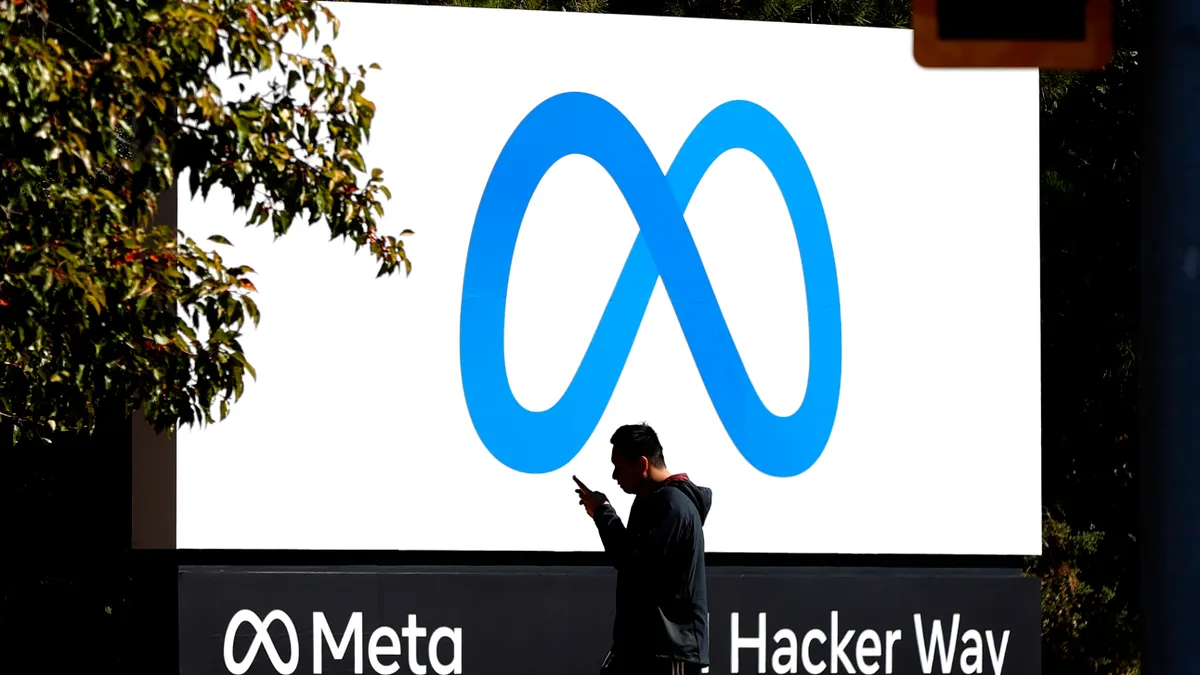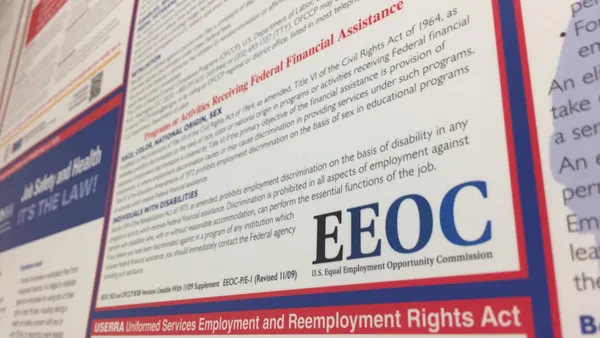Regardless of the outcome in the ongoing saga over 2018 EEO-1 filings — the next major update on which is due April 3 — some observers believe pay data reporting is on the way for employers. This is particularly the case as momentum around equal pay continues to build among employee advocates and lawmakers.
The good news about the probability of tacked-on pay data reporting is that HR teams already have, in all likelihood, much of the data they need to comply with the U.S. Equal Employment Opportunity Commission's (EEOC) requirements. Even for employers completely late to the ballgame on pay data analysis, an announcement this week that puts reporting requirements back in play wouldn't be impossible to deal with, experts told HR dive.
Pay data reporting in 3 steps
You can boil down the pay data reporting process into roughly three steps: surveying employees for their demographic information, collecting payroll and hours worked data and then reporting that information to EEOC. "That is truly it," Arthur Tacchino, chief innovation officer at compliance technology firm SyncStream, told HR Dive in an email. "Maintaining the data and making sure it is accurate is the challenge in those three steps."
Surveying for demographic info
Employers generally are familiar with the self-identification component of the EEO-1, which is unlikely to change no matter what happens this week. Provided an employer meets EEOC's EEO-1 filing requirements, it must report employee data categorized by race/ethnicity, gender and job category. The agency provides an example form for those unfamiliar with the process. First-time filers also must register their company with the agency prior to filing.
Employees generally self-identity demographic information via a survey. The survey can be done as part of the onboarding process, but also can be administered afterward; either way, everyone employed during the employer's chosen "snapshot" period — a pay period in October, November or December — must be accounted for, Robert O'Hara, member of the firm at Epstein Becker Green, told HR Dive in an interview. EEOC doesn't endorse any particular survey form for this purpose, but does link to a couple of examples.
What happens if you reach out to an employee and receive no response, or they refuse to take the survey? Employers can make an educated guess for the purpose of filling out the form, Tacchino said, "but it is important that employers document their attempt to retrieve self-identified information first." Employers also can allow employees to request changes to their recorded gender or ethnicity, O'Hara added.
Collecting pay data
This is the EEO-1 component that federal agencies must clarify by April 3.
Officially, the pay reporting component is in effect, experts previously told HR Dive following a federal judge's ruling, and some don't believe the EEOC can stop the requirements from taking effect this year. But the portal, which opened March 20, did not include this component, hence the confusion.
Even so, the component relies on data accessible to the employer, specifically from two sources: W-2 and hours worked. The latter is "a bit of a contrivance," O'Hara said, "because [EEOC wants] to try to figure out how many hours are being collected." The assumption is that a full-time employee is working 40 hours, but employers must also capture overtime if they are paying it out.
EEOC outlines 12 different pay bands, O'Hara said, and the wage data determines which band each employee is counted under. "Then you overlay that over the demographic information in your EEO-1 report," he explained. Freelancers and contractors, i.e. "non-common law" workers who file Form 1099, are not included in the reporting, Tacchino said.
During this process, employers may find that their human resource information system (HRIS) and payroll systems aren't aligned, O'Hara noted. "That's where the re-coding is taking place — how to take the data, sweep the data from payroll systems into HRIS systems," he said. "They're two very different things and they don't typically talk to each other." It's not a process that can be set up with just one press of a button, O'Hara said, and having employees properly coded in the HRIS can help, but employers still need to look at every data point to ensure accuracy.
Reporting to EEOC
When it comes time to file, employers have a few things to note.
First, EEOC states on its website a preference for submission of the EEO-1 either through its online portal or via electronically transmitted data file. There are alternate reporting formats accepted by the agency, but the use of paper forms must receive agency approval.
There also may be data security concerns at play. "Companies are very worried about the security of a system that's not proven," O'Hara said. "Any time you give reports to the government, you're always concerned about the security of the system and data transfer." Compounding those concerns is the possibility that EEOC's internal infrastructure isn't prepared to absorb all of the pay data to be reported to it, O'Hara said. If that's the case, the agency may ask for the pay data component to be sent on paper via mail.
Additionally, disparities may come to light as a result of any pay equity analysis, O'Hara said, and companies should be prepared to investigate. Factors like education and experience may be sufficient to explain these disparities, but O'Hara believes the end of the process is a useful time to ask questions. "If you can't explain it, then you need to make an adjustment," he said.
Another note: Collected pay data may not be considered privileged. "The best thing [employers] can do to mitigate the impact of lawsuit is try to remedy any discrepancies that they become aware of and fully document those steps," Tacchino said.




















